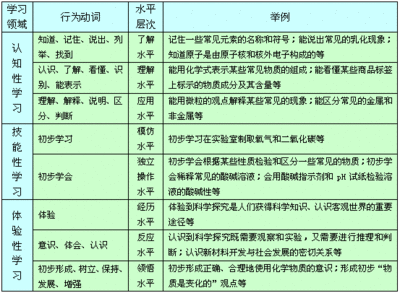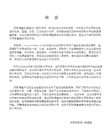Delphi 7中 ActionMainMenuBar、ActionManager、Action、actionl cocos actionmanager
interface
uses
Windows, Messages, SysUtils, Variants, Classes, Graphics, Controls, Forms,
Dialogs, ActnList, StdActns, ToolWin, ActnMan, ActnCtrls, ActnMenus,
StdCtrls, ImgList, ComCtrls, ExtActns, XPStyleActnCtrls, BandActn,
StdStyleActnCtrls;
type
TForm1 = class(TForm)
ActionManager1: TActionManager;
ActionMainMenuBar1: TActionMainMenuBar;
Action1: TAction;
Action2: TAction;
Action3: TAction;
ReopenActionList1: TActionList;
Action4: TAction;
Action5: TAction;
Action6: TAction;
Action7: TAction;
Action8: TAction;
ActionToolBar1: TActionToolBar;
ImageList1: TImageList;
FileOpen1: TFileOpen;
EditCut1: TEditCut;
EditCopy1: TEditCopy;
EditPaste1: TEditPaste;
EditSelectAll1: TEditSelectAll;
EditUndo1: TEditUndo;
EditDelete1: TEditDelete;
RichEditBold1: TRichEditBold;
RichEditItalic1: TRichEditItalic;
RichEditUnderline1: TRichEditUnderline;
RichEditStrikeOut1: TRichEditStrikeOut;
RichEditBullets1: TRichEditBullets;
RichEditAlignLeft1: TRichEditAlignLeft;
RichEditAlignRight1: TRichEditAlignRight;
RichEditAlignCenter1: TRichEditAlignCenter;
SearchFind1: TSearchFind;
SearchFindNext1: TSearchFindNext;
SearchReplace1: TSearchReplace;
SearchFindFirst1: TSearchFindFirst;
FileSaveAs1: TFileSaveAs;
FilePrintSetup1: TFilePrintSetup;
FileRun1: TFileRun;
FileExit1: TFileExit;
RichEdit1: TRichEdit;
CustomizeActionBars1: TCustomizeActionBars;
Action9: TAction;
procedure FormCreate(Sender: TObject);
procedure FileOpen1Accept(Sender: TObject);
procedure ReopenActionExecute(Sender: TObject);
private
{ Private declarations }
ReopenMenuItem: TActionClientItem;
OpenToolItem: TActionClientItem;
procedure FindReopenMenuItem(AClient: TActionClient);
procedure FindOpenToolItem(AClient: TActionClient);
procedure UpdateReopenItem(ReopenItem: TActionClientItem);
public
{ Public declarations }
end;
var
Form1: TForm1;
implementation
{$R *.dfm}
procedure TForm1.FindReopenMenuItem(AClient: TActionClient);
begin
// Find the Reopen item by looking at the item caption
if AClient is TActionClientItem then
if Pos('Reopen...', TActionClientItem(AClient).Caption) <> 0 then
ReopenMenuItem := AClient as TActionClientItem
end;
procedure TForm1.FindOpenToolItem(AClient: TActionClient);
begin
// Find the Open item by looking at the item caption
if AClient is TActionClientItem then
if Pos('Open', TActionClientItem(AClient).Caption) <> 0 then
OpenToolItem := AClient as TActionClientItem;
end;
procedure TForm1.FormCreate(Sender: TObject);
procedure SetupItemCaptions(AnItem: TActionClientItem);
var
I: Integer;
begin
if Assigned(AnItem) then
for I := 0 to AnItem.Items.Count - 1 do
TCustomAction(ReopenActionList1.Actions[I]).Caption :=
Copy(AnItem.Items[I].Caption, 5, MaxInt);
end;
begin
RichEdit1.Align := alClient;
// Find the Reopen... menu item on the ActionMainMenu
ActionManager1.ActionBars.IterateClients(ActionManager1.ActionBars[0].Items,
FindReopenMenuItem);
// Find the Reopen... menu item on the ActionToolBar
ActionManager1.ActionBars.IterateClients(ActionManager1.ActionBars[1].Items,
FindOpenToolItem);
// Set the captions of the actions since they are used to open the file
SetupItemCaptions(ReopenMenuItem);
SetupItemCaptions(OpenToolItem);
end;
procedure TForm1.FileOpen1Accept(Sender: TObject);
var
I: Integer;
Found: Boolean;
begin
Found := False;
// If the filename is already in the list then do not add it again
for I := 0 to ReopenActionList1.ActionCount - 1 do
if CompareText(TCustomAction(ReopenActionList1.Actions[I]).Caption,FileOpen1.Dialog.FileName) = 0 then
begin
Found := True;
break;
end;
if not Found then
begin
// Update the Reopen menu...
UpdateReopenItem(ReopenMenuItem);
UpdateReopenItem(OpenToolItem);
end;
// ...then actually open the file
RichEdit1.Lines.LoadFromFile(FileOpen1.Dialog.FileName);
end;
procedure TForm1.UpdateReopenItem(ReopenItem: TActionClientItem);
var
I: Integer;
begin
if ReopenItem = nil then
exit;
// Add thew new filename to the beginning of the list and move other items down
for I := ReopenActionList1.ActionCount - 1 downto 0 do
if I = 0 then
TCustomAction(ReopenActionList1.Actions[I]).Caption := FileOpen1.Dialog.FileName
else
TCustomAction(ReopenActionList1.Actions[I]).Caption :=
TCustomAction(ReopenActionList1.Actions[I - 1]).Caption;
// Add new items to the reopen item if necessary
if ReopenItem.Items.Count < ReopenActionList1.ActionCount then
ReopenItem.Items.Add;
// Set the item captions by appending a number for use as the shortcut
// This change will cause them to be streamed which allows us to store the
// filenames when the application is shutdown
for I := 0 to ReopenItem.Items.Count - 1 do
begin
ReopenItem.Items[I].Action := ReopenActionList1.Actions[I];
ReopenItem.Items[I].Caption := Format('&%d: %s', [I,
TCustomAction(ReopenActionList1.Actions[I]).Caption]);
end;
end;
procedure TForm1.ReopenActionExecute(Sender: TObject);
begin
// Set the reopened filename into the FileOpen action and call OnAccept to open the file normally
FileOpen1.Dialog.FileName := (Sender as TCustomAction).Caption;
// Execute the action's OnAccept logic
FileOpen1.OnAccept(nil);
end;
end.
更多阅读

高中物理教学中对《布鲁姆教育目标分类学》中事实、概念、程序性 布鲁姆目标分类
高中物理教学中对《布鲁姆教育目标分类学》中事实、概念、程序性知识的一点理解及归纳席源在布鲁姆教育目标分类学中,将教育目标设计为一个二维表。第一个维度将知识分为四个方面:事实性知识、概念性知识、程序性知识、元认知知识;
如何在Word中插入、修改、删除艺术字 word删除艺术字
如何在Word中插入、修改、删除艺术字——简介艺术字在Word中的应用极为广泛,它是一种具有特殊效果的文字,比一般的文字更具艺术性,因此,在编辑排版文章的时候,往往需要使用到艺术字来实现某种特殊效果,很受广大OFFICE使用者的青睐,在此本人

EMS、申通、圆通、中通、韵达几个常用快递公司的网点分布情况 申通圆通韵达哪个便宜
以下是EMS、申通、圆通、中通、韵达几个常用快递公司的网点分布情况,敬请各位代理悉知!邮政EMS服务范围中国境内都送申通快递网点服务范围江苏省宝应 :县城、安宜工业园、城南工业园、经济开发区、黄浦、黄塍、范水镇、小官庄镇、望直
转 蒋中正、蒋经国、宋美龄的原声讲话视频 蒋经国与宋美龄关系
[转] 蒋中正、蒋经国、宋美龄的原声讲话(视频)2013-4-9 12:26阅读(1)转载自老知青多

关于长期股权投资中逆流、顺流交易会计处理的理解 长期股权投资转换理解
关于长期股权投资中逆流、顺流交易会计处理的理解长期股权投资权益法下,对于投资企业与联营企业、合营企业之间发生的未实现内部交易损益应予抵消。即投资企业与联营企业、合营企业之间发生的未实现内部交易损益按照持股比例计算归
 爱华网
爱华网